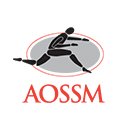News Updates
Study finds predictors for ACL injury are dissimilar between male and female athletes
Except for increased anterior-posterior knee laxity, results from this study indicated female athletes and male athletes were not similar with regard to predictors for first-time
Primary hip arthroscopy yields improved patient-reported outcome scores
Patients who underwent primary hip arthroscopy experienced greater improvement in patient-reported outcome scores at 2-year follow-up compared with patients who
Early life intervention may prevent knee OA later in life
A recent narrative review of the association between childhood or early adulthood risk factors and the development of knee osteoarthritis showed osteoarthritis may be prevented
Better fix for torn ACLs
Researchers at the University of Missouri School of Medicine have developed a model to show that a newer surgical technique results in a stronger, more natural ACL repair.
Preoperative opioid use linked with lower outcome scores after TSA
Patients with a history of preoperative opioid use experienced significantly lower preoperative baseline and final outcome scores after total shoulder arthroplasty than patients who did not take opioids preoperatively, according to results.
Tranexamic acid use in TSA linked with reduced blood loss, shorter hospitalization
Patients who received tranexamic acid prior to total shoulder arthroplasty had a statistically significant reduction in blood loss and had shorter recovery room and hospital stays than controls, according to results.
A 48-year-old woman with right knee pain
A 48-year-old woman with a history of hypertension, rheumatoid arthritis treated with chronic prednisone, and a two-pack-per- week cigarette use, presented to clinic with 8 years of right knee pain. She had an intra-articular steroid injection with some relief 6 years ago. She denied any hip pain and uses a cane for ambulation. On physical examination she appears to be a healthy 5’2’’, 160-pound woman who walks with an antalgic gait. She has a 20° flexion contracture, with flexion limited to 90°, and a mild valgus deformity of her knee. The extremity was neurovascularly intact and she had full, painless hip range of motion.
Stiff shoulders less likely to re-tear after rotator cuff repair vs non-stiff shoulders
Patients who had preoperative shoulder stiffness and those who developed stiffness at 6 weeks and 12 weeks postoperatively after rotator cuff repair were less likely to experience a re-tear compared with patients who had no stiffness, according to results presented here.
Researchers call for consideration of pre-injury status in ACL reconstruction evaluations
Researchers call for consideration of pre-injury status in ACL reconstruction evaluations
Similar results seen for ACL reconstruction with autograft, hybrid graft
Satisfactory and similar subjective and objective clinical outcomes were reported in a study of patients who underwent primary ACL reconstruction with either hybrid graft or autograft.





